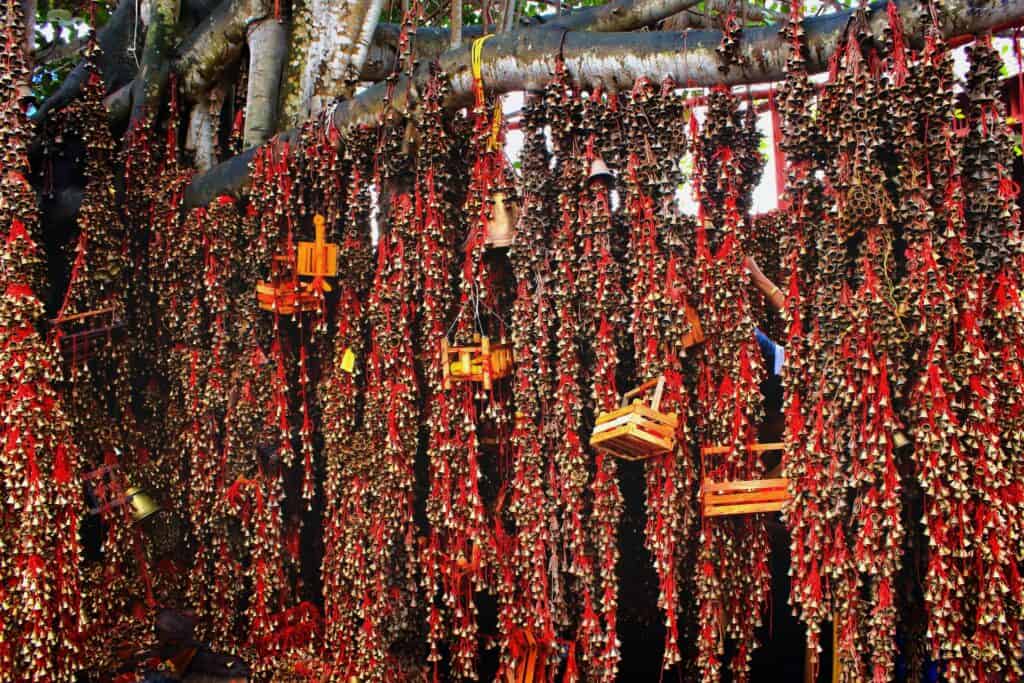Introduction
The heritage of Hinduism is way more thoughtful and practical rather than mere superstitions that are believed nowadays. Even the tiniest of elements have importance and meaning for being in a certain place or a particular manner. Back then people did not just believe in blindly following traditions but had both psychological and scientific reasons behind their activities. There is a major misinterpretation of most of the rituals followed by our Hindu forefathers in today’s era. It is believed that the reasons they had were not to create discrimination but to stand stronger in unity and love.

The ‘artist’ also known as prayers was an important act performed back then and was considered to be sacred and of utmost importance. Temples are considered as the holiest places for worshipping God. Also, one is not a stranger to the bells present in the entrance of the temple and other essential spots. However, the bell also has a purpose and signifies its own importance to be in the temple and also our homes. Although only a few people know the reason behind installing a bell and also ringing it before entering into the sacred place. Have you ever thought about these little things around your temple? Even for a while has ever a thought come across your mind about why do you ring or play it before entering? If you have you will furthermore discover the reason behind performing this ritual.
The bell in temples is not an ordinary bell but is made up of a metal which has scientific thoughts put into it too. It comprises of metals like copper, cadmium, chromium, manganese and nickel which have been used in order to make it. Each of these metals is mixed in a fixed ratio which holds utmost importance behind its science. All of the bells are constructed to develop a discrete sound which helps to harmonize your entire brain. As and when the individual rings the bell it produces seven successive sounds thereby elucidating your seven chakras.
It is also said that when you ring the bell your mind is cleared of all the thoughts and stress that you have carried all your way. So that when you enter you are more alert and conscious. Furthermore, it is believed as the only way to concentrate on your prayers and relieve your mind from thoughts before you enter the sacred place.

Variations of Bell
The bell is a vital part of the Hindu poojas and prayers. Only after the bell is rung or played that the pooja begins. There are also variations in the types of bells used for prayers and worship and at different places.
- Garuda bell: it is a small bell which can also be used with single-handed.
- Doorbell, which is normally placed on entrances of doors and gates. It could be both big and tiny.
- Handbell, which comes with a brass place, the plate is played with a wooden stick.
- Ghanta and it is huge and wide. Yep, the sound is loud and can be heard till quite a distance once played. The bell is usually run while performing rituals like worshipping the dirty, offering food or bathing it. Also, it is rung while entering into the temple by devotees and visitors.
The most common belief is that the bell when rung invites God to be worshipped and prayed unto. Also, it is assumed that the negative and evil energies stay away from the place.
There are also beliefs that when the bell is rung the vibrations set in the atmosphere reach wideout making nearby places also sanctified and protected. Also, the benefit of these vibrations is that it keeps the air free from any micro-organisms that have entered the area and keep the atmosphere clean and pure. Furthermore, by keeping the surrounding pure it also restricts negative forces and invites goodness and abundance.
Importance in the Shape of the Bell/Ghanta
The shape and body of the bell represent the time Ananta. Its tongue symbolizes the Hindu Goddess Saraswati and the handle of the bell is supposed to be an important aspect of Prana Shakti and symbolically represents the Hindu important Gods Hanuman, Garuda and Nandi.

